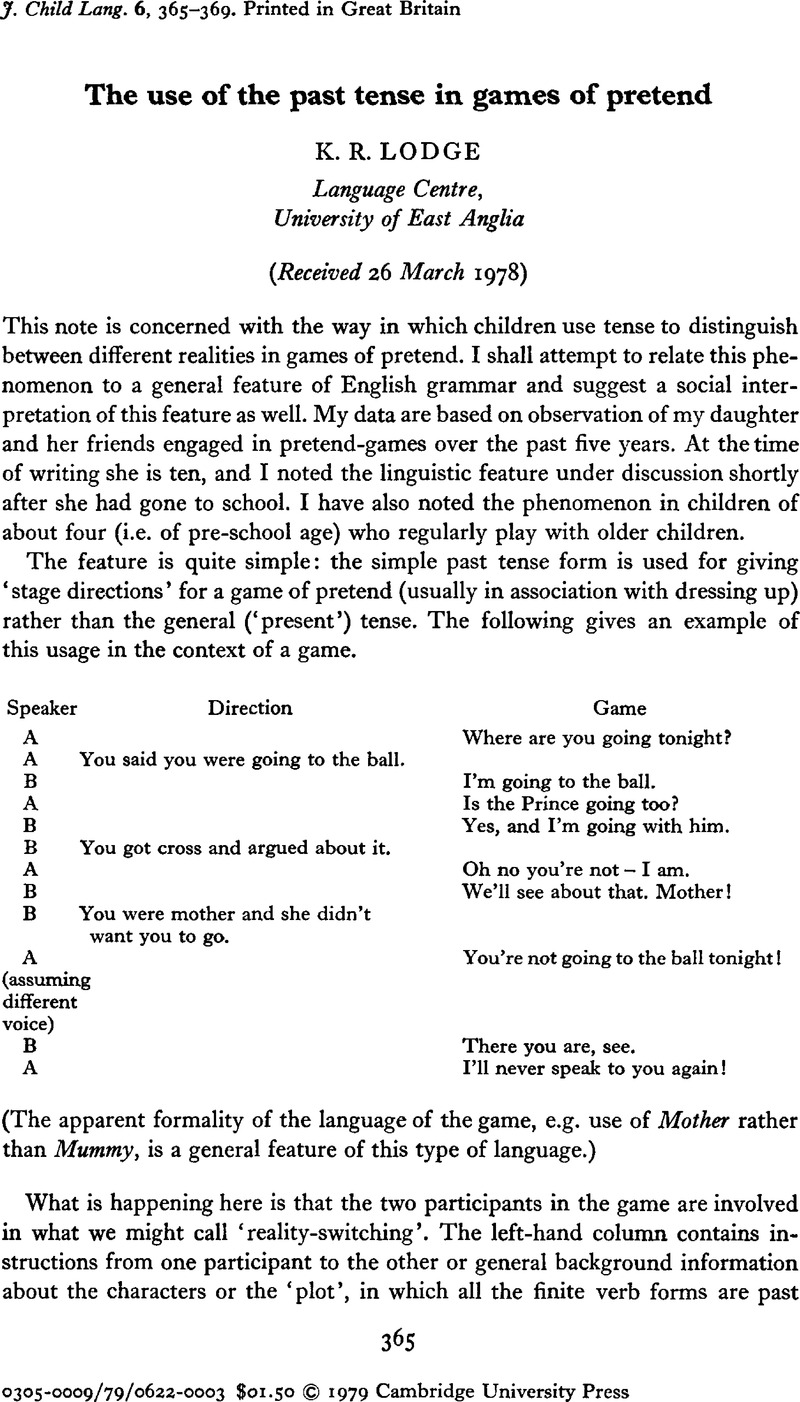Crossref Citations
This article has been cited by the following publications. This list is generated based on data provided by Crossref.
Fein, Greta G.
1981.
Pretend Play in Childhood: An Integrative Review.
Child Development,
Vol. 52,
Issue. 4,
p.
1095.
Garvey, Catherine
and
Kramer, Thayer L
1989.
The language of social pretend play.
Developmental Review,
Vol. 9,
Issue. 4,
p.
364.
Sinclair, Anne
and
Van Gessel, Ruth
1990.
The form and function of questions in children's conversations.
Journal of Pragmatics,
Vol. 14,
Issue. 6,
p.
923.
Musatti, Tullia
and
Orsolini, Margherita
1993.
Uses of past forms in the social pretend play of Italian children.
Journal of Child Language,
Vol. 20,
Issue. 3,
p.
619.
Clark, Eve V.
1995.
Speech, Language, and Communication.
p.
304.
Kauppinen, Anneli
1996.
The Italian indicativo imperfetto compared to the Finnish conditional verb form — Evidence from child language.
Journal of Pragmatics,
Vol. 26,
Issue. 1,
p.
109.
Clark, Eve V
1997.
Conceptual perspective and lexical choice in acquisition.
Cognition,
Vol. 64,
Issue. 1,
p.
1.
Kauppinen, Anneli
1999.
Computation for Metaphors, Analogy, and Agents.
Vol. 1562,
Issue. ,
p.
196.
Rakoczy, Hannes
Tomasello, Michael
and
Striano, Tricia
2006.
The role of experience and discourse in children's developing understanding of pretend play actions.
British Journal of Developmental Psychology,
Vol. 24,
Issue. 2,
p.
305.
PATARD, ADELINE
2010.
L'emploi préludique de l'imparfait entre temporalité et modalité: Éléments d'analyse à partir d'une étude de cas.
Journal of French Language Studies,
Vol. 20,
Issue. 2,
p.
189.
Björk-Willén, Polly
2012.
Disputes in Everyday Life: Social and Moral Orders of Children and Young People.
Vol. 15,
Issue. ,
p.
119.
Karniol, Rachel
2016.
A language-based, three-stage, social-interactional model of social pretend play: Acquiring pretend as an epistemic operator, pretending that, and pretending with (the P–PT–PW model).
Developmental Review,
Vol. 41,
Issue. ,
p.
1.
2017.
The Handbook of Morphology.
p.
737.
Verhagen, Arie
2019.
Shifting tenses, viewpoints, and the nature of narrative communication.
Cognitive Linguistics,
Vol. 30,
Issue. 2,
p.
351.
Clark, Eve V.
2020.
Perspective-taking and pretend-play: Precursors to figurative language use in young children.
Journal of Pragmatics,
Vol. 156,
Issue. ,
p.
100.
Berkhuizen, Carina
2020.
Playing bus in a bus – children transforming spaces within a mobile preschool into resources in place-making fantasy play.
International Journal of Play,
Vol. 9,
Issue. 2,
p.
182.
Strand, Bror-Magnus S.
2024.
Playing With Fire Compounds: The Tonal Accents of Compounds in (North) Norwegian Preschoolers’ Role-Play Register.
Language and Speech,
Vol. 67,
Issue. 1,
p.
113.



